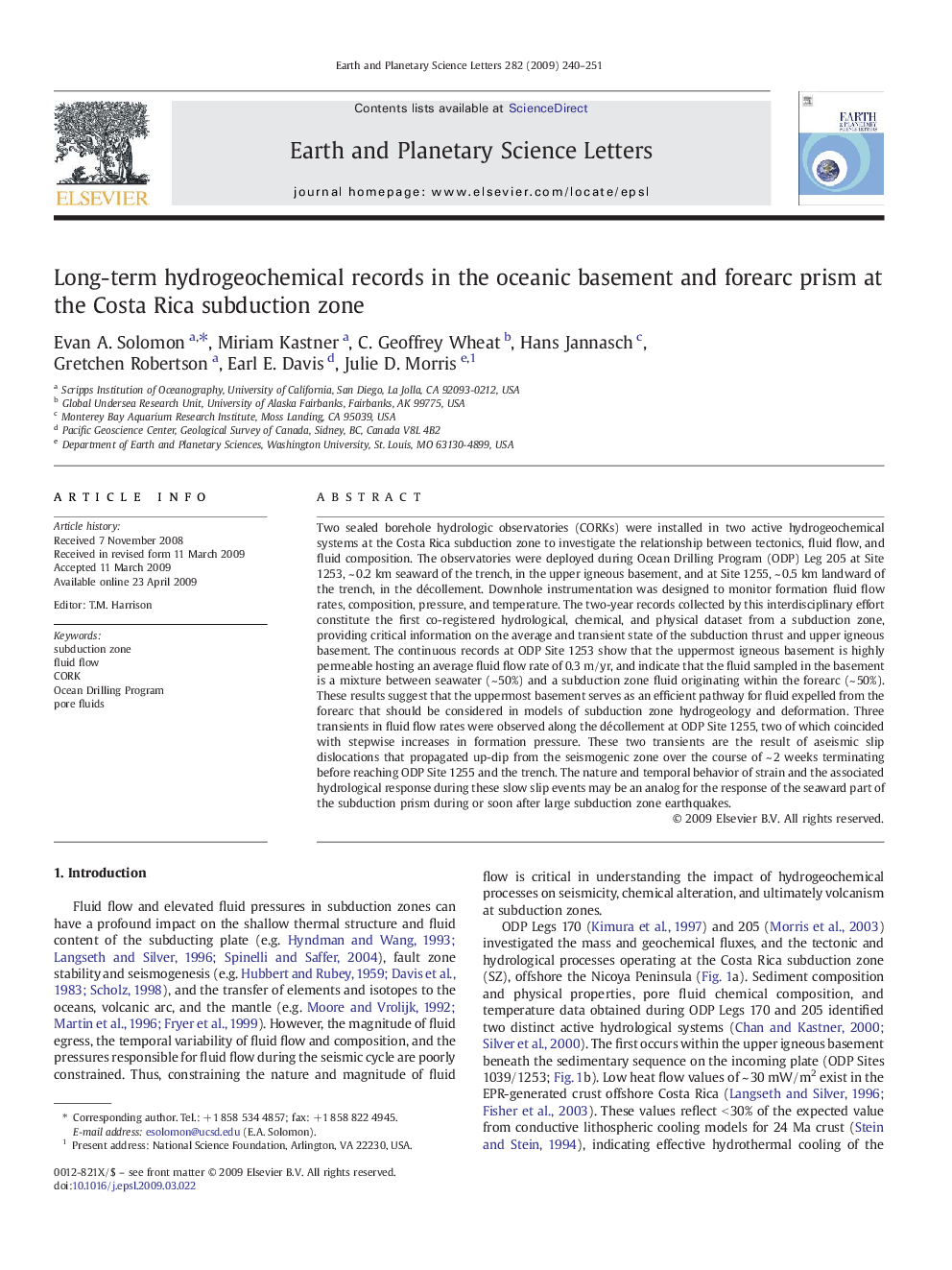| کد مقاله | کد نشریه | سال انتشار | مقاله انگلیسی | نسخه تمام متن |
|---|---|---|---|---|
| 4679099 | 1634873 | 2009 | 12 صفحه PDF | دانلود رایگان |

Two sealed borehole hydrologic observatories (CORKs) were installed in two active hydrogeochemical systems at the Costa Rica subduction zone to investigate the relationship between tectonics, fluid flow, and fluid composition. The observatories were deployed during Ocean Drilling Program (ODP) Leg 205 at Site 1253, ~ 0.2 km seaward of the trench, in the upper igneous basement, and at Site 1255, ~ 0.5 km landward of the trench, in the décollement. Downhole instrumentation was designed to monitor formation fluid flow rates, composition, pressure, and temperature. The two-year records collected by this interdisciplinary effort constitute the first co-registered hydrological, chemical, and physical dataset from a subduction zone, providing critical information on the average and transient state of the subduction thrust and upper igneous basement. The continuous records at ODP Site 1253 show that the uppermost igneous basement is highly permeable hosting an average fluid flow rate of 0.3 m/yr, and indicate that the fluid sampled in the basement is a mixture between seawater (~ 50%) and a subduction zone fluid originating within the forearc (~ 50%). These results suggest that the uppermost basement serves as an efficient pathway for fluid expelled from the forearc that should be considered in models of subduction zone hydrogeology and deformation. Three transients in fluid flow rates were observed along the décollement at ODP Site 1255, two of which coincided with stepwise increases in formation pressure. These two transients are the result of aseismic slip dislocations that propagated up-dip from the seismogenic zone over the course of ~ 2 weeks terminating before reaching ODP Site 1255 and the trench. The nature and temporal behavior of strain and the associated hydrological response during these slow slip events may be an analog for the response of the seaward part of the subduction prism during or soon after large subduction zone earthquakes.
Journal: Earth and Planetary Science Letters - Volume 282, Issues 1–4, 30 May 2009, Pages 240–251